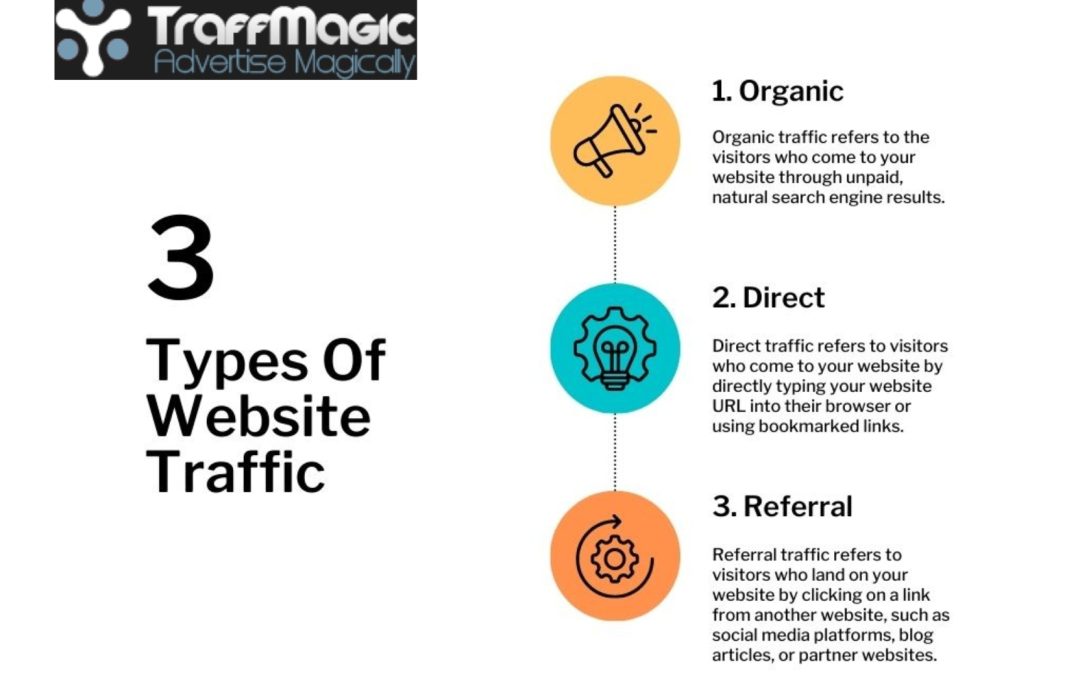Certainly! Here are three types of website traffic along with their explanations
Organic Traffic:
Organic traffic refers to the visitors who come to your website through unpaid, natural search engine results. These visitors find your website by entering relevant search queries in search engines like Google. Here are the advantages and disadvantages of organic traffic:
Advantages:
- Credibility: Organic search results are seen as more trustworthy, which can increase user confidence in your website.
- Cost-effective: Organic traffic does not require direct monetary investment, making it a cost-effective long-term strategy.
- Sustainable growth: By optimizing your website for search engines, you can attract consistent organic traffic over time.
Disadvantages:
- Time-consuming: Building organic traffic takes time and effort as you need to optimize your website, create quality content, and improve search engine rankings.
- Dependency on search algorithms: Search engines regularly update their algorithms, which can impact your website’s visibility and rankings.
- Competition: As organic traffic is highly sought after, you’ll face competition from other websites vying for the same audience.
Direct Traffic:
Direct traffic refers to visitors who come to your website by directly typing your website URL into their browser or using bookmarked links. These users are typically familiar with your brand or have visited your website before. Here are the advantages and disadvantages of direct traffic:
Advantages:
- Brand recognition: Direct traffic indicates that users are already aware of your brand, suggesting a level of trust and familiarity.
- Higher engagement: Direct traffic often includes returning visitors who are more likely to spend more time on your website, explore multiple pages, and convert into customers.
- Better control: Direct traffic is not influenced by search engine algorithms or referral sources, giving you more control over your website’s performance.
Disadvantages:
- Limited growth potential: Direct traffic is primarily dependent on existing customers or those who are already familiar with your brand, which may limit your reach to new audiences.
- Lack of insights: Unlike other traffic sources, direct traffic does not provide detailed referral information, making it challenging to understand user behavior or measure marketing effectiveness.
- Reliance on brand awareness: Direct traffic heavily relies on your brand recognition, which can be a challenge for new or less-known businesses.
Read More About: 10 methods to get website traffic to your website fast
Referral Traffic:
Referral traffic refers to visitors who land on your website by clicking on a link from another website, such as social media platforms, blog articles, or partner websites. Here are the advantages and disadvantages of referral traffic:
Advantages:
- Targeted audience: Referral traffic from relevant websites can bring in users who are more likely to be interested in your content or products.
- Increased visibility: Backlinks from reputable sources can enhance your website’s visibility, credibility, and search engine rankings.
- Partnership opportunities: Referral traffic can open doors for potential collaborations or partnerships with other websites in your industry.
Disadvantages:
- Dependency on external sources: Changes or removal of referral sources can impact the volume and quality of referral traffic, making it less predictable.
- Varied quality: Referral traffic can vary in terms of quality and relevance, as not all referring websites may align perfectly with your target audience.
- Limited control: Website owners have limited control over how other websites link to their content, affecting the quality and relevance of the referral traffic.
- Understanding these different types of website traffic can help you develop a comprehensive strategy to attract and engage your target audience effectively.

